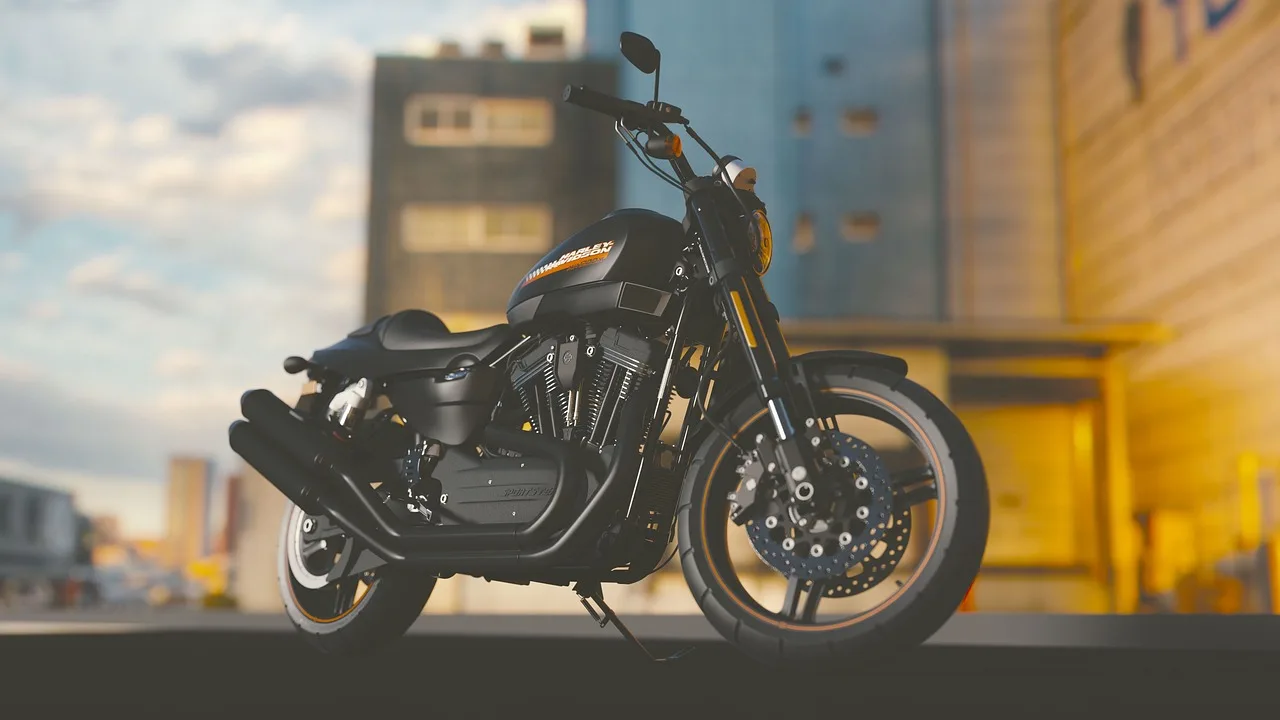Motorcycle insurance is a specific insurance coverage for motorcyclists in the United States (US). It is intended to give financial protection in case of an accident, theft, or damage to the motorcycle. Insurance is required for motorcycle owners since it can assist in covering the cost of repairing or replacing the motorcycle and any medical expenses incurred due to an accident.
In the United States, motorcycle insurance is often required by state law, and the lack of coverage can result in fines or other penalties. In addition, if you are involved in an accident without insurance, you may be held financially accountable for any damages or injuries, which can be financially ruinous.
Having motorbike insurance can also bring peace of mind when riding since you will be financially supported in an accident or other issue. It may offer additional perks, such as roadside assistance and rental reimbursement.
Overall, motorcycle insurance is crucial for any motorcyclist, as it may give financial security and peace of mind while on the road.
Types of insurance coverage available in the United States
There are several types of motorcycle insurance coverage available in the United States, including:
Liability coverage: This type of coverage is typically required by state law. It covers the cost of damage or injuries you may cause to another person or their property while operating your motorcycle.
Collision coverage: This type of coverage helps to pay for repairs or replacement of your motorcycle if it is damaged in an accident.
Comprehensive coverage: This type of coverage helps to pay for repairs or replacement of your motorcycle if non-collision events, such as theft, vandalism, or natural disasters, damage it.
Medical payments coverage: This type of coverage can help cover medical expenses for you or your passengers in case of an accident.
Uninsured/underinsured motorist coverage: This type of coverage can help cover the cost of damage or injuries caused by a driver who does not have insurance or does not have enough insurance to cover the full cost of the damages.
Custom parts and equipment coverage: This type of coverage can help cover the cost of repairs or replacement of custom parts and equipment added to your motorcycle.
Roadside assistance coverage: This type of coverage can help cover the cost of roadside assistance in case of a breakdown or other emergencies.
It is important to note that not all insurance providers offer these coverage options, and coverage limits and exclusions can vary by provider. Understanding your needs and expectations is important before choosing the coverage plan.
Factors that affect motorcycle insurance rates

Several factors can affect motorcycle insurance rates, including:
- Age and experience of the rider: Younger and less experienced riders are considered at higher risk and may be charged higher rates.
- Type of motorcycle: Sport and high-performance motorcycles are considered higher risk and may charge higher rates.
- Location: Insurance rates can vary by state and even by zip code. Urban areas with higher traffic and crime rates tend to have higher rates.
- Riding habits: Riders who use their motorcycle frequently or for long distances may be charged higher rates.
- Claims history: Riders with a history of accidents or claims may be charged higher rates.
- Safety features: Some insurance providers may offer discounts for motorcycles with safety features such as anti-lock brakes or airbags.
- Credit history: Some insurance providers may use credit history to determine rates.
- Insurance history: Having prior insurance coverage can be considered a positive factor and help in getting lower rates.
- Motorcycle storage: Storing the motorcycle in a garage or secure location may qualify for discounts.
It’s important to understand that these factors can vary among insurance providers and states. Some of them might not be considered by some providers or states. However, shopping around and comparing quotes from different providers is important to get the best rates.
How to choose the right insurance policy
Choosing the right motorcycle insurance policy can be overwhelming, but it doesn’t have to be. Here are some steps to help you choose the right policy for you:
Understand your coverage needs: Consider what type of coverage you need, such as liability, collision, comprehensive, medical payments, and roadside assistance. Consider factors such as the value of your motorcycle, where you live, and your riding habits.
Research different insurance providers: Compare coverage options and rates from different insurance providers. Look for providers with a good reputation and a history of promptly paying claims.
Look for discounts: Many insurance providers offer discounts for safety features, anti-theft devices, and good riding habits.
Read the policy carefully: Before you choose a policy, make sure you understand the coverage limits, exclusions, and deductibles.
Compare motorcycle insurance quotes: Compare quotes from different providers to find the best policy for your needs.
Consider bundling with other policies: If you own other vehicles or homes, consider bundling your policies with the same provider to get discounts.
Review your policy regularly: Review your policy annually or when you make significant changes, such as buying a new motorcycle, moving, or changing your usage.
By following these steps, you can be confident that you are choosing the right motorcycle insurance policy to meet your needs. It’s important to remember that the cheapest policy may only sometimes be the best option, so it is important to weigh the cost with the coverage offered.
Comparison of different motorcycle insurance companies
There are many motorcycle insurance companies in the United States, each with its own strengths and weaknesses. When comparing providers, it’s important to consider the following factors:
Coverage options: Compare the types of coverage offered by different providers, such as liability, collision, comprehensive, medical payments, and roadside assistance.
Rates: Compare the rates offered by different providers to determine the most affordable. Remember that the cheapest policy may only sometimes be the best option, as it may have lower coverage limits or more exclusions.
Claims handling: Look at the providers’ reputation for handling claims promptly and fairly.
Discounts: Check for discounts offered by different providers, such as safety features, anti-theft devices, or good riding habits.
Financial stability: Check the insurance provider’s financial stability to ensure they can pay claims if needed.
Customer service: Compare the quality of customer service offered by different providers. You want to choose a provider that is easy to reach and responsive to your needs.
Bundle options: Some providers offer bundle options where you can combine motorcycle insurance with other types. This can help you save money.
Online tools and mobile app availability: Some providers offer online tools and mobile apps to help you manage your policy and make claims which can be a convenient feature.
It’s important to research and compares different providers before making a decision. Some popular motorcycle insurance providers in the US include GEICO, Progressive, Allstate, and State Farm.
How to file a motorcycle insurance claim

Filing a motorcycle insurance claim can be a stressful process. Still, it’s important to know the steps to take to ensure that your claim is handled quickly and efficiently. Here are the general steps you should take when filing a motorcycle insurance claim:
- Notify the police: If you are involved in an accident, you must notify the police immediately. They will create an accident report, which will be important for your insurance claim.
- Get medical attention: If you or any of your passengers are injured, it’s important to get medical attention immediately. Notify the insurance company of any injuries and keep all medical bills and records.
- Gather evidence: Collect as much evidence as possible at the accident scene. This can include photos of the damage, contact information for any witnesses, and the accident report.
- Contact your insurance provider: Notify your insurance provider of the accident as soon as possible. They will provide you with a claim number and assign an adjuster to your case.
- Provide documentation: Provide your insurance provider with all relevant documentation, such as the accident report, medical bills, and repair estimates.
- Keep in touch with your adjuster: Keep in touch with your adjuster and follow up on the status of your claim.
- Review the settlement offer: Once the adjuster has assessed the damages and costs, they will provide you with a settlement offer. Review the offer carefully and ensure it covers all the damages and expenses.
- Seek help if you disagree: If you disagree with the settlement offer, you have the right to seek help from your insurance agent or state insurance department.
It’s important to remember to keep all documents and records of the accident and follow up on your claim’s status. By following these steps, you can ensure that your motorcycle insurance claim is handled quickly and efficiently.
Tips for reducing motorcycle insurance costs
Motorcycle insurance can be costly, but there are several ways to help reduce the cost of your coverage. Here are some tips:
- Shop around: Compare rates from multiple insurance providers to find the best deal.
- Bundle policies: If you own other vehicles or homes, consider bundling your policies with the same provider to get discounts.
- Take a safety course: Some insurance providers offer discounts for riders who have completed a motorcycle safety course.
- Opt for a higher deductible: A higher deductible means you’ll pay more out-of-pocket if you need to file a claim, but it can also lower your premium.
- Maintain a good credit score: Some insurance providers use credit history to determine rates, so maintaining a good credit score can help you get lower rates.
- Store the motorcycle in a secure location: Some insurance providers offer discounts for motorcycles stored in a garage or other secure location.
- Reduce your mileage: If you don’t use your motorcycle often, you may be able to qualify for a lower rate.
- Get discounts for safety features: Some insurance providers offer discounts for motorcycles with safety features such as anti-lock brakes or airbags.
- Review your policy regularly: Review your policy annually or when you make significant changes, such as buying a new motorcycle, moving, or changing your usage.
It’s important to remember that these tips may not apply to every insurance provider or state. Some providers may not offer certain discounts or may not consider certain factors. However, by following these tips, you can save money on your motorcycle insurance and get the coverage you need at a price you can afford.
State-specific motorcycle insurance laws and regulations
Motorcycle insurance laws and regulations vary by state in the United States. Some states have specific requirements for motorcycle insurance, while others do not. It’s important to understand your state’s specific laws and regulations to ensure that you have the right coverage and comply with the law.
Here are some examples of state-specific motorcycle insurance laws and regulations:
- In Florida, motorcycles are not required to have insurance; however, if you own a motorcycle, you will be required to show proof of financial responsibility in case of an accident.
- In California, state law requires that all registered motorcycles be covered by liability insurance. Proof of insurance must be carried while riding.
- In Pennsylvania, motorcycle insurance is not mandatory. Still, it is highly recommended, as it can protect you financially in case of an accident.
- In Texas, motorcycle insurance is mandatory. You must have liability insurance and carry proof of insurance while operating the motorcycle.
- In New York, all registered motorcycles must be covered by liability insurance.
It’s important to note that these laws and regulations can change, and it’s a good idea to check with your state’s Department of Insurance or Motor Vehicles for the most current information.
It’s also important to remember that even if your state doesn’t require motorcycle insurance, it’s still a good idea to have coverage. Suppose you are involved in an accident and do not have insurance. In that case, you may be held financially responsible for any damage or injuries caused, which can be financially devastating.
How to compare motorcycle insurance quotes

Comparing motorcycle insurance quotes is an important step in finding the right coverage at the right price. Here are some tips for comparing quotes:
Get quotes from multiple providers: Contact several insurance providers to get quotes for the coverage you need.
Compare coverage options: Compare the types of coverage offered by different providers, such as liability, collision, comprehensive, medical payments, and roadside assistance.
Compare rates: Compare the rates offered by different providers to determine the most affordable. Remember that the cheapest policy may only sometimes be the best option, as it may have lower coverage limits or more exclusions.
Look for discounts: Check for discounts offered by different providers, such as safety features, anti-theft devices, or good riding habits.
Read the policy carefully: Before you choose a policy, make sure you understand the coverage limits, exclusions, and deductibles.
Bundle options: Some providers offer bundle options where you can combine motorcycle insurance with other types. This can help you save money.
Online tools and mobile app availability: Some providers offer online tools and mobile apps to help you manage your policy and make claims which can be a convenient feature.
Customer service: Compare the quality of customer service offered by different providers. You want to choose a provider that is easy to reach and responsive to your needs.
By following these steps, you can be confident that you are comparing quotes from different providers and choosing the best policy. It’s important to remember that the cheapest policy may only sometimes be the best option, so it is important to weigh the cost with the coverage offered.
Frequently asked questions about motorcycle insurance in the United States
Here are some frequently asked questions about motorcycle insurance in the United States:
- Is motorcycle insurance mandatory in the United States?
- It depends on the state. Some states have mandatory motorcycle insurance laws, while others do not. However, it is still a good idea to have coverage, even if it’s not required by law, as it can protect you financially in case of an accident.
- What types of coverage are available for motorcycle insurance?
- Motorcycle insurance coverage includes liability, collision, comprehensive, medical payments, and roadside assistance.
- What factors affect motorcycle insurance rates?
- Factors that can affect motorcycle insurance rates include the age and experience of the rider, the type of motorcycle, location, riding habits, claims history, safety features, credit history, and insurance history.
- How can I reduce the cost of my motorcycle insurance?
- There are several ways to reduce the cost of motorcycle insurance, such as shopping around, bundling policies, taking a safety course, opting for a higher deductible, maintaining a good credit score, storing the motorcycle in a secure location, reducing mileage, and getting discounts for safety features.
- What should I do if I’m involved in a motorcycle accident?
- If you are involved in a motorcycle accident, it’s important to notify the police as soon as possible, get medical attention if necessary,
Conclusion and next steps for obtaining motorcycle insurance coverage.
In conclusion, motorcycle insurance is an essential investment for any motorcycle owner. It provides important financial protection and peace of mind while on the road. Understanding your state’s specific laws and regulations and your coverage needs.
To obtain motorcycle insurance coverage, the next steps include the following:
- Research different insurance providers and compare coverage options, rates and discounts.
- Choose a provider and a policy that best fits your needs and budget.
- Review the policy carefully and understand the coverage limits, exclusions, and deductibles.
- Review your policy regularly, such as when you make significant changes like buying a new motorcycle or moving.
- Keep all the important documents and records of the policy and the accident if any.
- Don’t hesitate to contact your insurance provider or state insurance department if you have any questions or concerns.
- By following these steps, you can ensure that you have the right coverage and comply with the law. It’s also important to remember that motorcycle insurance can be costly. Still, there are ways to reduce costs by shopping around, bundling policies and taking advantage of discounts.







